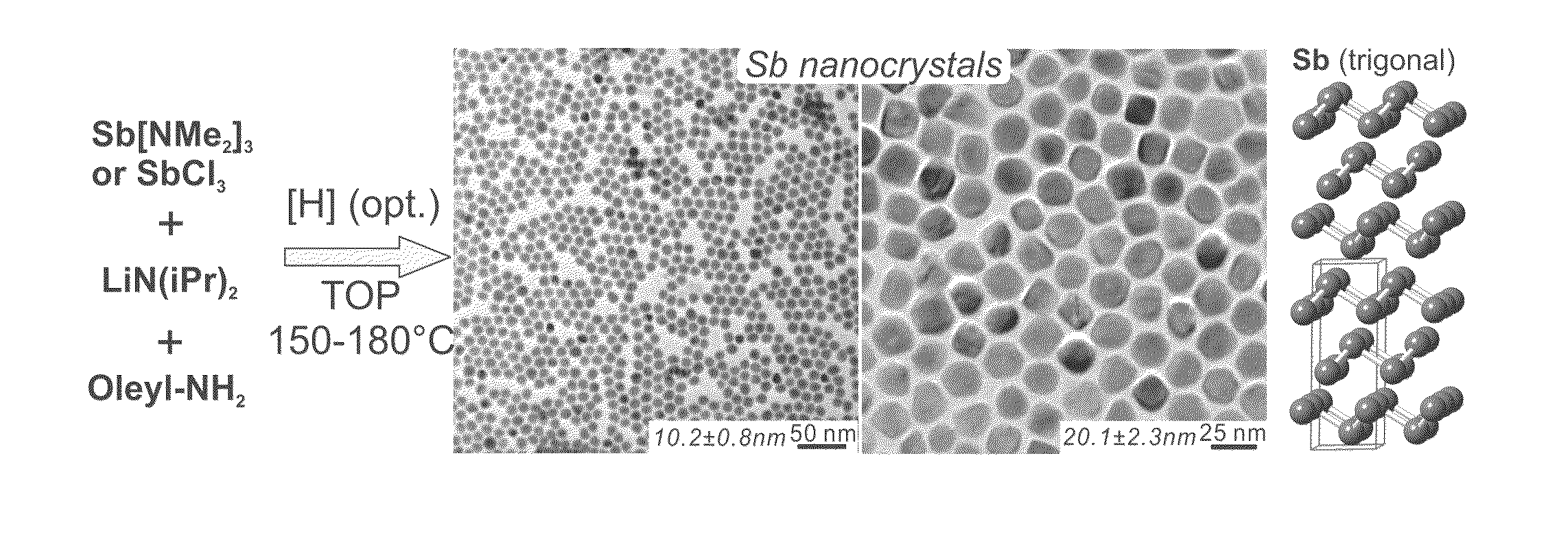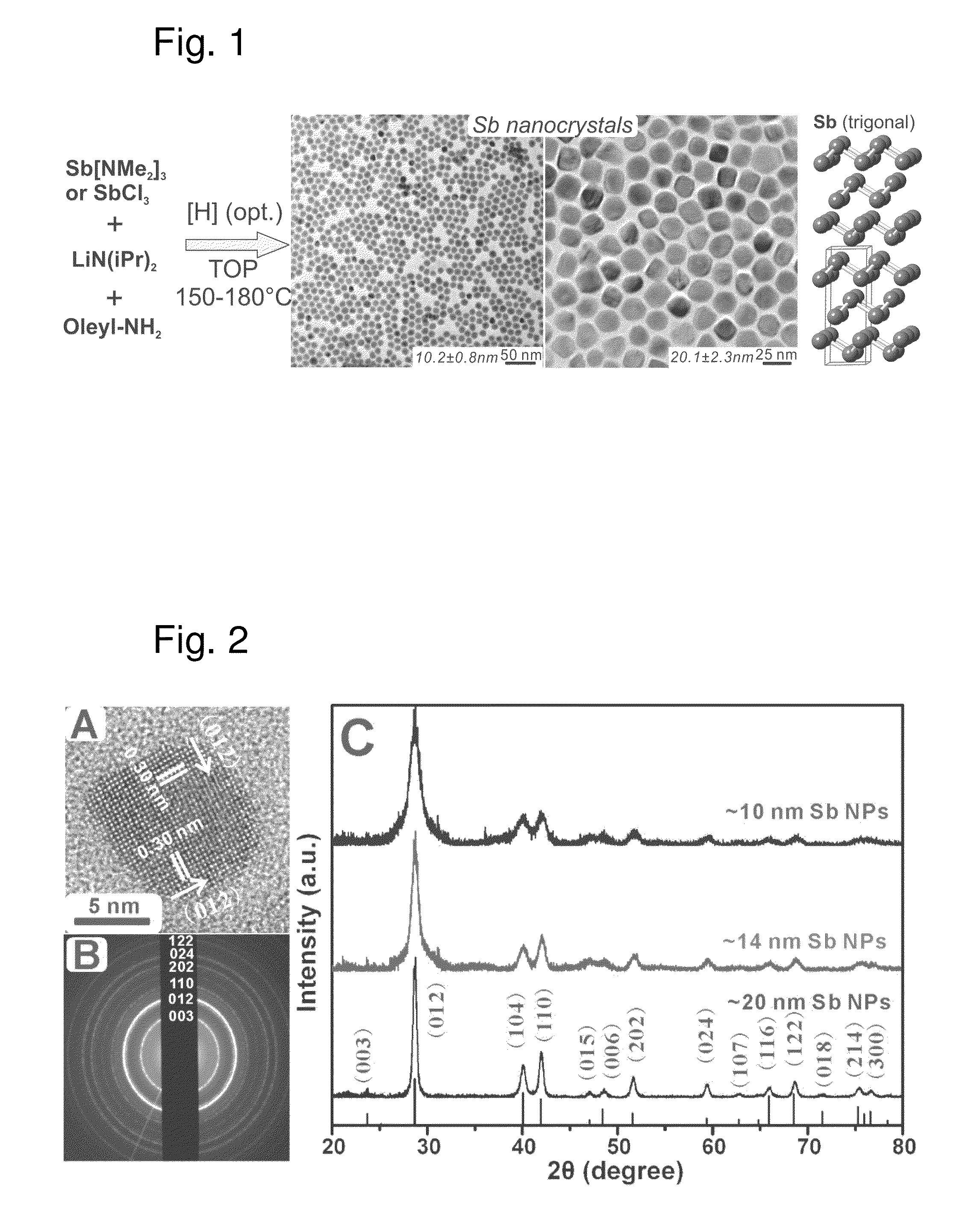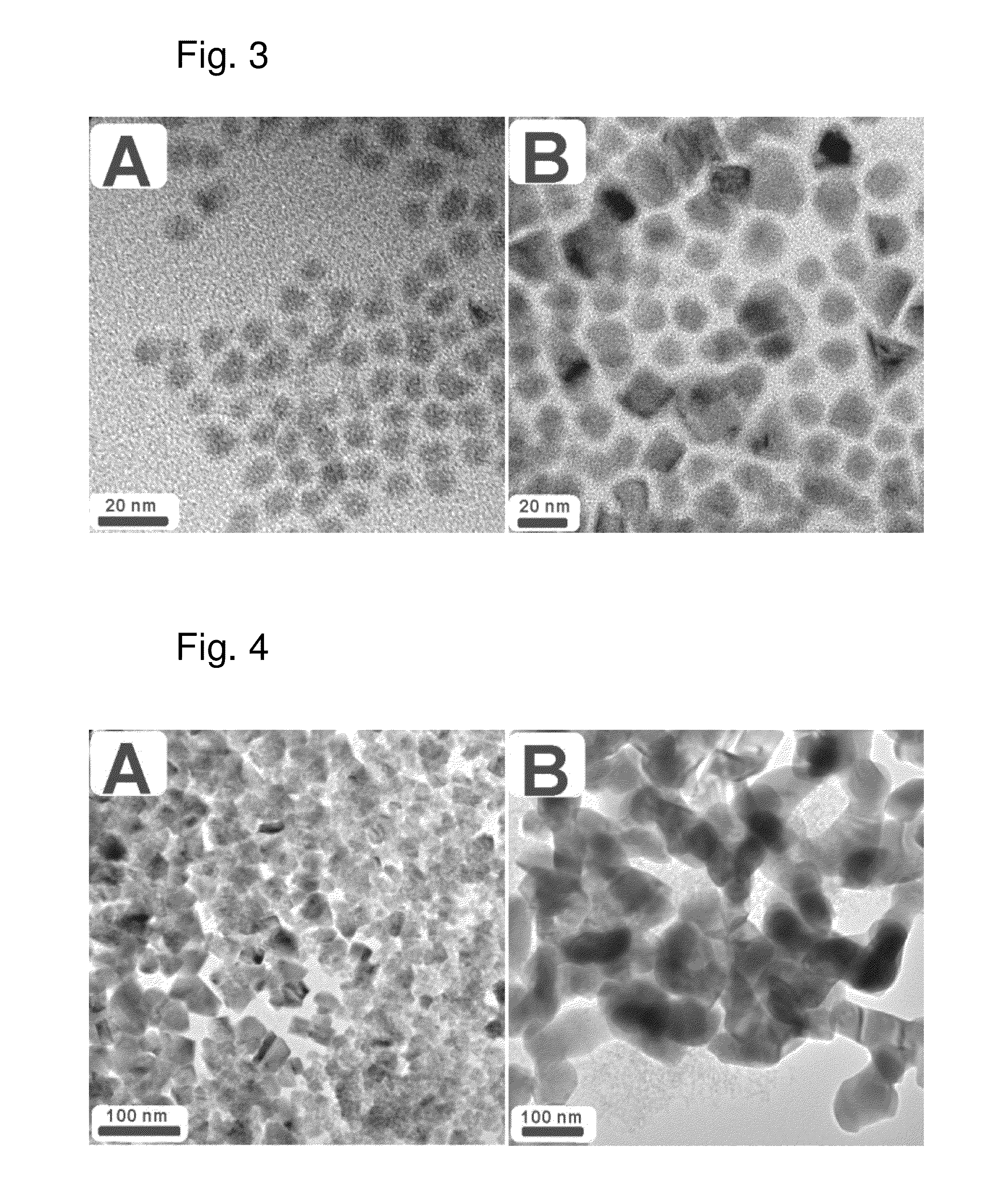Antimony based anode material for rechargeable batteries and preparation method
an anode material and rechargeable battery technology, applied in the field of antimony based anode material for rechargeable batteries, can solve the problems of inability to produce monodisperse nanoparticles or nanocrystals in precipitation methods
- Summary
- Abstract
- Description
- Claims
- Application Information
AI Technical Summary
Benefits of technology
Problems solved by technology
Method used
Image
Examples
Embodiment Construction
[0053]In the description above and in the following description of the invention and of exemplary embodiments, any statements relating to possible explanations or interpretations of observations and results shall not be construed as binding the invention to a particular theory.
General Procedure
[0054]Synthesis of monodisperse Sb NCs. 10-20 nm Sb NCs with a narrow size distribution of 7-11% can be obtained by injecting Sb precursor, diluted with toluene or octadecene, into a hot (preferably 160-200° C.) solution containing mixture of trioctylphosphine (TOP), Lithium diisopropylamide (LiN(iPr)2, LDA) and oleylamine (OLA). Two precursors, tris(dimethylamino)antimony (III) [Sb(NMe2)3 or simply Sb(DMA)3] and inexpensive antimony(III) chloride, yielded NCs of very similar quality under nearly identical reaction conditions. Detailed structural characterization can be made using e.g. high-resolution transmission electron microscopy (HR-TEM), electron diffraction, powder X-ray diffraction (XR...
PUM
| Property | Measurement | Unit |
|---|---|---|
| Fraction | aaaaa | aaaaa |
| Fraction | aaaaa | aaaaa |
| Fraction | aaaaa | aaaaa |
Abstract
Description
Claims
Application Information
 Login to View More
Login to View More - R&D
- Intellectual Property
- Life Sciences
- Materials
- Tech Scout
- Unparalleled Data Quality
- Higher Quality Content
- 60% Fewer Hallucinations
Browse by: Latest US Patents, China's latest patents, Technical Efficacy Thesaurus, Application Domain, Technology Topic, Popular Technical Reports.
© 2025 PatSnap. All rights reserved.Legal|Privacy policy|Modern Slavery Act Transparency Statement|Sitemap|About US| Contact US: help@patsnap.com



